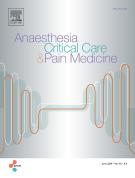Chloride toxicity in critically ill patients: What's the evidence? - 31/03/17
 , Axelle Ferry a
, Axelle Ferry a  , Maité Chaussard a
, Maité Chaussard a  , Matthieu Legrand a, b, c, ⁎
, Matthieu Legrand a, b, c, ⁎ 
| pagine | 6 |
| Iconografia | 0 |
| Video | 0 |
| Altro | 0 |
Abstract |
Crystalloids have become the fluid of choice in critically ill patients and in the operating room both for fluid resuscitation and fluid maintenance. Among crystalloids, NaCl 0.9% has been the most widely used fluid. However, emerging evidence suggests that administration of 0.9% saline could be harmful mainly through high chloride content and that the use of fluid with low chloride content may be preferable in major surgery and intensive care patients. Administration of NaCl 0.9% is the leading cause of metabolic hyperchloraemic acidosis in critically ill patients and side effects might target coagulation, renal function, and ultimately increase mortality. More balanced solutions therefore may be used especially when large amount of fluids are administered in high-risk patients. In this review, we discuss physiological background favouring the use of balanced solutions as well as the most recent clinical data regarding the use of crystalloid solutions in critically ill patients and patients undergoing major surgery.
Il testo completo di questo articolo è disponibile in PDF.Keywords : Chloride, Strong ion difference, Hyperchloraemic acidosis, Balanced crystalloid, Intensive care
Mappa
Vol 36 - N° 2
P. 125-130 - Aprile 2017 Ritorno al numeroBenvenuto su EM|consulte, il riferimento dei professionisti della salute.
L'accesso al testo integrale di questo articolo richiede un abbonamento.
Già abbonato a @@106933@@ rivista ?

